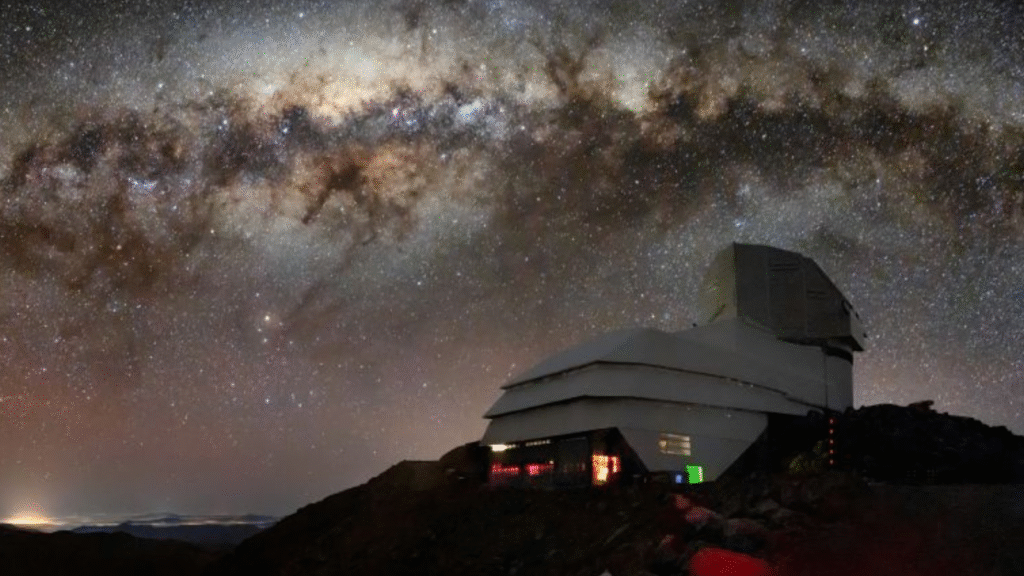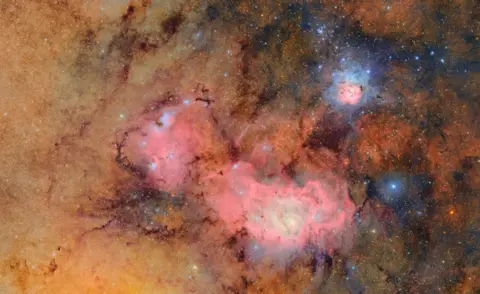The Vera C. Rubin Observatory, perched atop Cerro Pachón in Chile, has released its highly anticipated first light images, marking a momentous milestone in modern astronomy. Featuring breathtaking views of distant galaxies, stellar nurseries, and asteroids, the images are the first glimpse of what promises to be the most comprehensive survey of the southern sky ever completed.
A Telescope Built to Transform Science
The observatory’s centerpiece is an 8.4-meter Simonyi Survey Telescope paired with the world’s largest digital camera, housing a staggering 3.2-gigapixel sensor. As part of the ten-year Legacy Survey of Space and Time (LSST), this powerful setup will scan the entire southern celestial hemisphere every three nights—capturing vast amounts of data and unveiling new cosmic phenomena. Nightly collections are expected to total 20 terabytes, ultimately building an astronomical archive of tens of billions of celestial objects.

What the First Images Show
In just over 10 hours of test observations, the observatory captured a rich mosaic of cosmic wonders:
- The Virgo Cluster: detailed galaxy formations showcasing spiral and merging galaxies amidst dense star fields.
- Nebulae: including glimpses of the Lagoon and Trifid regions, unveiling swirls of color and cosmic dust.
- Asteroids: more than 2,000 previously unknown asteroids were identified in a single night.
Scientists describe the images as an early monument to LSST’s capabilities—coining the term “astro‑cinematography” to capture cosmic events unfolding in real-time.
Why It Matters
- Dark Energy and Dark Matter: Mapping billions of galaxies will shed light on the mysterious forces shaping the Universe’s expansion and structure.
- Solar System Tracking: Millions of asteroids, comets, and near‑Earth objects will be cataloged—enhancing planetary defense and discovery.
- Transient Events: Supernovae, gamma‑ray bursts, and other fleeting phenomena will be captured and monitored across time.
According to DB observatory staff, this marks “the greatest astronomy discovery engine ever built.” Each image could fill hundreds of 4K TV screens—undoubtedly, a visual testament to its scale.
Global Collaboration and Impact
This observatory is a joint initiative of the U.S. National Science Foundation and the Department of Energy, built with collaboration from international research institutions. The massive data flow will be processed through distributed data centers, and ultimately, released publicly, enabling researchers worldwide to conduct spectral and astrophysical analyses.
The observatory also cements Chile’s role as a hub of astronomical excellence—and reinforces South America’s leadership in cosmic exploration.
Challenges and Future Potential
The telescope’s deep reach into the cosmos faces challenges: managing satellite interference, processing petabyte-scale data, and ensuring robust algorithms for automated celestial detection. But its scale and design are unmatched—it will repeatedly surveil the sky, generating time-lapse “movies” of the universe and enabling a dynamic cosmos view.
In the coming months, public watch events will be held virtually and in planetariums to celebrate each new data release. For scientists and stargazers alike, Rubin Observatory opens the door to unexpected discoveries—from rogue planets to cataclysmic cosmic blasts.
What’s Next
Full scientific operations start later this year. Over time, Rubin will build a record of cosmic change, from the motion of space rocks to the behavior of distant quasars. It could uncover the elusive Planet Nine, reveal dark energy patterns, or connect transient events with gravity wave occurrences.
With its debut light, the Vera C. Rubin Observatory has set the stage for a new era in astronomy—where the universe is observed not just in images, but in evolving cosmic narratives.
#VeraRubinObservatory #FirstLight #LSST #AstroCinematography #DarkMatter #DarkEnergy #AsteroidDiscovery #CosmicSurvey #AstronomyRevolution #ChileObservatories #LegacySurvey

















